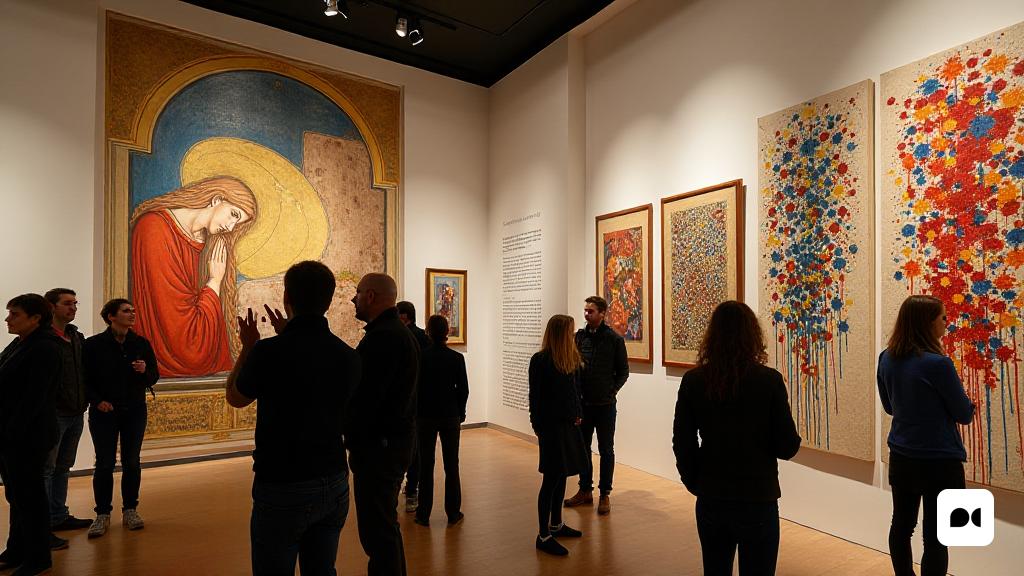An unexpected encounter between times
The philosopher Didi-Huberman reveals his fascination with a work by Fra Angelico, where a few drops seem to anticipate the dripping that would later popularize Jackson Pollock. This situation exemplifies an artistic phenomenon known as ‘anachronism’, where a creation loses its temporary location, creating a network of connections with other historical periods.
L’Orant’s trip to Nova York
A similar time occurred in 1965, when the Sant Quirze de Pedret prayer was exhibited at the New York World Fair. At that event, the audience asked Joan Miró about the origin of that pre -Romanesque fresco, demonstrating how the history of art can cross temporary and cultural borders.
A new exhibition that connects cultures
The recent inauguration of the exhibition ‘L’Orant i Miró. A mural spirit ‘at the Museum of Solsona seeks to explore the mysterious bond between the prayer, which is now an emblem of the museum, and the work of Miró. This exhibition represents an effort to offer a renewed view on Catalan culture, connecting past and present.
Collaborations that transform heritage
The Museum’s initiative has been made possible by alliances with institutions such as the Joan Miró Foundation in Barcelona and the Llorens Artigas Foundation. These collaborations have allowed to recover a cultural legacy that promotes contemporary creativity.
The essence of Miró: art and anonymity
Orson Welles described Chartres’s cathedral as ‘An anonymous glory’, a concept that resonates with Miró’s philosophy. In his book ‘Of the murder of the Peinture à la Céramique’, Miró explores the idea that mural art can be a vehicle to connect with humanity without the need for personal recognition.
Local creation and universal inspiration
The art of Miró, far from being conceptual, is based on its local environment. His works become extensions of the territory, reflecting a search for inspiration in the places he worked, such as El Fresa de Pedret. The wall creations, instead of being analyzed, are intended to be experienced, as parts of a whole.
Exhibitions that encourage dialogue
The sample includes eight panels of the Mural Mural Member of the Sun (1957), which are first displayed together. Also, the Romanesque collection of the museum establishes a dialogue with mural art, revealing similarities and anachronisms that Miró considered ‘encouragement signs’.
A future full of possibilities
Despite the connections between Miró and L’Orant, it is uncertain if the artist previously met this work. There is still a long way to explore cultural and artistic heritage, with many silences and mysteries to discover, which will continue to feed the debate on influence and inspiration in art.

